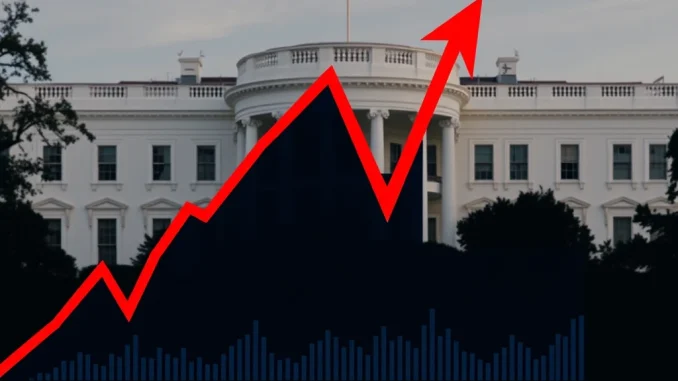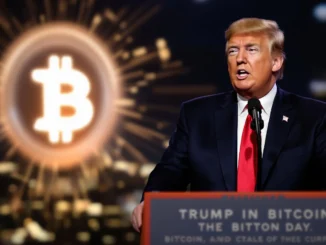
In a dramatic turn of events that sent shockwaves through global markets, former President Donald Trump reportedly reversed his stance on certain tariffs, stepping back from policies that many feared could tip the US economy into a recession. This pivotal decision, driven by concerns over a potential economic downturn and market instability, triggered a significant market surge, offering a stark reminder of the profound impact of trade policies on financial health. Let’s delve into the details of this critical economic maneuver and its broader implications.
Why the Sudden Tariff U-Turn? Understanding the Recession Threat
According to a revealing report from the Wall Street Journal, sources close to the matter indicated that President Trump, despite initially being prepared to weather some economic discomfort from his tariff policies, ultimately grew concerned about the looming threat of a deeper economic depression. This shift in perspective wasn’t arbitrary; it was fueled by mounting evidence of market anxiety and the potential for severe economic fallout.
Several factors contributed to this change of heart:
- Market Turmoil: The report highlights significant market turbulence as a key catalyst. Falling stock prices and increased volatility signaled growing investor unease about the economic outlook under the existing trade policies.
- Bond Market Signals: National Economic Council Director Kevin Hassett pointed to the bond markets as a crucial influence. A “collapsing” bond market, characterized by a sharp increase in Treasury yields, raised alarm bells within the administration. This is a classic indicator of economic stress and potential recession.
- Economic Advisers’ Influence: Treasury Secretary Scott Bessent was reportedly instrumental in advocating for a revised trade approach. His insights and recommendations likely played a significant role in shaping the administration’s altered course.
Essentially, the administration faced a critical juncture: persist with tariffs and risk a severe economic downturn, potentially spiraling into a depression, or adjust course to stabilize markets and mitigate economic damage. The decision to roll back certain tariffs suggests a prioritization of economic stability over unwavering adherence to the initial trade strategy.
The Immediate Impact: Market Rebound and Investor Relief
The market response to the tariff rollback was nothing short of electrifying. The S&P 500 experienced its most significant single-day gain since 2008, a year marked by the global financial crisis. This dramatic market rebound underscores the sensitivity of financial markets to trade policy and the perceived risk of tariffs. Investors clearly welcomed the signal that the administration was taking steps to de-escalate trade tensions and support economic growth.
Here’s a snapshot of the immediate market reaction:
| Market Index | Impact | Significance |
|---|---|---|
| S&P 500 | Best day since 2008 | Indicates strong positive investor reaction |
| Treasury Yields | Stabilized/Decreased | Reduced concern about economic stress |
| Investor Sentiment | Improved | Increased confidence in economic outlook |
This swift and powerful market rebound serves as a compelling example of how policy adjustments can directly influence investor confidence and market performance. It highlights the interconnectedness of trade policy, market sentiment, and overall economic health.
Trump’s Tariff Strategy: A High-Risk Gamble?
President Trump‘s initial embrace of tariffs was a cornerstone of his economic agenda, aimed at reshaping trade relationships and protecting domestic industries. However, this strategy was not without its risks. The potential for retaliatory tariffs, supply chain disruptions, and increased costs for consumers were always present. The Wall Street Journal report suggests that the administration became acutely aware of these risks as they began to materialize in market signals and economic indicators.
Was Trump‘s tariff strategy a gamble that nearly backfired? Some analysts argue that it was a necessary tool to address trade imbalances and pressure trading partners. Others contend that it was a reckless approach that jeopardized economic stability. Regardless of perspective, the reported reversal indicates a recognition within the administration that the risks associated with unchecked tariffs were becoming unacceptably high.
Looking Ahead: Lessons Learned and Future Implications
The episode of Trump‘s tariff reversal offers several key takeaways for policymakers, investors, and businesses:
- Trade Policy Impacts Markets: Trade policies, particularly tariffs, have a direct and significant impact on financial markets. Changes in trade stance can trigger rapid and substantial market movements.
- Economic Data Matters: Market signals, such as bond yields and stock market performance, provide crucial real-time feedback on the economic consequences of policy decisions. Policymakers must pay close attention to these indicators.
- Flexibility is Key: Economic policy is not static. The willingness to adapt and adjust strategies in response to evolving economic conditions is essential for effective governance.
- Global Interdependence: In today’s interconnected global economy, trade policies have far-reaching consequences that extend beyond national borders. International cooperation and dialogue are vital for managing trade relations effectively.
Conclusion: Averted Crisis or Temporary Reprieve?
President Trump‘s reported decision to reverse course on certain tariffs appears to have been a calculated move to avert a potential economic crisis, specifically a recession that could have deepened into a depression. The immediate market rebound suggests that this intervention provided much-needed relief and restored some investor confidence. However, the longer-term implications of this episode remain to be seen.
Was this a temporary reprieve or a fundamental shift in trade policy? Will the underlying trade tensions resurface? Only time will tell. What is clear is that this event serves as a powerful illustration of the delicate balance between trade policy, market stability, and overall economic prosperity. It underscores the need for careful consideration and adaptive strategies in navigating the complex landscape of international trade and economic governance.



